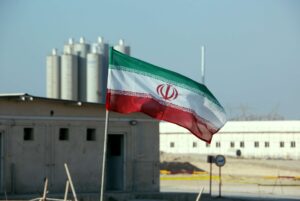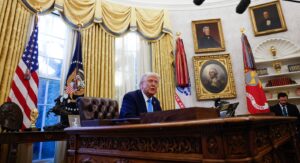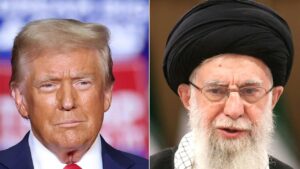A comprehensive analysis of the nuclear talks impasse and the ongoing crisis in Gaza: The world is witnessing escalating tensions between Iran and the United States over the nuclear dossier, while simultaneously, the humanitarian crisis in Gaza has reached its peak. A comprehensive analysis of the nuclear talks reveals how these interconnected crises are reshaping regional and global security landscapes.
A comprehensive analysis of the nuclear talks impasse and the ongoing crisis in Gaza
As diplomatic efforts stall, the situation grows increasingly precarious, with potential ramifications that could extend far beyond the Middle East.
A comprehensive analysis of the nuclear talks demonstrates how these negotiations have become entangled with broader geopolitical tensions. The standoff comes at a time when Gaza faces unprecedented humanitarian suffering, creating a perfect storm of instability. This report provides an in-depth examination of both crises and their complex interplay.
The convergence of nuclear proliferation concerns and humanitarian catastrophe presents one of the most severe challenges to international peace and security in recent decades. A comprehensive analysis of the nuclear talks must consider how these parallel crises influence each other and what solutions might exist to address both simultaneously. you can read more about this topic here.
Section One: The Deadlock in Nuclear Negotiations
According to analysis by Ben Talab, senior expert on Iran’s nuclear program at the Foundation for Defense of Democracies, Iran has systematically and deliberately slowed the negotiation process. A comprehensive analysis of the nuclear talks identifies four primary objectives behind this tactical delay:
First, Iran seeks to buy time to circumvent the maximum pressure sanctions imposed by the Trump administration. By prolonging negotiations, Tehran hopes to alleviate economic pressures. Second, the regime aims to divide Western powers by offering tempting economic opportunities to European partners.
Third, continued talks serve as a deterrent against potential Israeli military action. Finally, Iran’s ultimate goal appears to be returning to an unreformed JCPOA with improved terms that would provide sanctions relief while maintaining nuclear advancements.
Iran’s Tactics in the Negotiation Process
A comprehensive analysis of the nuclear talks reveals how Iran’s current nuclear capabilities have dramatically altered the strategic calculus. The country now possesses 142 kg of uranium enriched to 60% purity – enough for three nuclear weapons if further enriched to weapons-grade (90%+).
This stockpile continues to grow as Iran installs advanced centrifuges at its underground Fordow facility, significantly increasing its enrichment capacity while protecting its program from potential airstrikes.
Current Status of Iran’s Nuclear Program
The progress of Iran’s nuclear program has raised serious concerns among international observers. A comprehensive analysis of the nuclear talks must account for several critical developments:
the installation of advanced centrifuges, the reduction of cooperation with IAEA inspectors, and the technical knowledge to reach weapons-grade enrichment within three weeks.
These advancements have shrunk Iran’s “breakout time” – the period needed to produce sufficient weapons-grade uranium for a nuclear device – to unprecedented levels, dramatically reducing the window for diplomatic solutions.
Section Two: The Humanitarian Crisis in Gaza
Since the collapse of the ceasefire on March 18, the Israel Defense Forces (IDF) have expanded their military operations in Gaza. A comprehensive analysis of the nuclear talks might seem unrelated to Gaza, but regional tensions are deeply interconnected.
Key military developments include the establishment of buffer zones in northern Gaza, the creation of the “Netzar Corridor” dividing major population centers, and evacuation orders for Rafah that have displaced hundreds of thousands of Palestinians.
According to Washington Post reports, approximately 70% of Gaza’s territory has now been declared a “no-go zone,” with only 30% remaining for Palestinian civilians – primarily concentrated in overcrowded refugee camps.
A comprehensive analysis of the nuclear talks must consider how this military situation impacts broader regional stability and the potential for conflict escalation.
Unfolding Humanitarian Catastrophe
The humanitarian situation in Gaza has reached catastrophic proportions. A comprehensive analysis of the nuclear talks would be incomplete without addressing how regional tensions contribute to human suffering. Since March 2, no food, medicine, or fuel has entered Gaza, creating desperate conditions.
The World Food Program has exhausted its supplies and can no longer provide daily meals to 900,000 Palestinians – about half the population. The complete cutoff of electricity since October 11, 2023, coupled with the lack of fuel for generators, has created a public health disaster.
A comprehensive analysis of the nuclear talks should recognize how these humanitarian crises create additional complications for regional diplomacy and conflict resolution efforts.
Hostage Situation
Current information indicates that 59 hostages remain in Gaza, with 35 officially declared dead by the IDF. While approximately 24 hostages are believed alive, recent intelligence suggests this number may be decreasing. A comprehensive analysis of the nuclear talks must acknowledge how the hostage crisis complicates regional dynamics and influences Israeli military decision-making.
Most hostages are reportedly held in underground tunnels in central Gaza – areas the IDF has not yet invaded. This situation presents an enormous challenge for rescue operations and ceasefire negotiations alike. A comprehensive analysis of the nuclear talks demonstrates how these interconnected crises create a complex web of challenges for international mediators.
Section Three: Oman’s Role and Future Scenarios
Oman, long considered a neutral mediator between Iran and the West, now faces serious allegations that undermine its credibility. A comprehensive analysis of the nuclear talks must examine reports that Oman has hosted Houthi political offices, facilitated weapons transfers to Yemen through its ports, and processed Iranian oil payments through its banking system.
A comprehensive analysis of the nuclear talks reveals how these allegations complicate Oman’s ability to serve as an honest broker. The sultanate’s recent diplomatic moves, including hosting Iran’s foreign minister while postponing meetings with U.S. envoys, have raised further questions about its neutrality in regional affairs.
Potential Scenarios
Several possible scenarios emerge from a comprehensive analysis of the nuclear talks:
- Escalated sanctions as the U.S. increases economic pressure
- Military action if Israel decides on preemptive strikes
- An interim agreement to temporarily reduce tensions
- Full weaponization if Iran chooses to pursue nuclear weapons
A comprehensive analysis of the nuclear talks suggests that the window for diplomatic solutions is closing rapidly. International policymakers must weigh these scenarios carefully as they consider responses to the dual crises of nuclear proliferation and humanitarian disaster in Gaza.
The Closing Diplomatic Window
Analysts warn that time is running out for peaceful resolution. A comprehensive analysis of the nuclear talks concludes that the international community must soon choose between accepting a nuclear-armed Iran or pursuing costly military action.
This crisis, ongoing since 2002, has reached its most dangerous phase yet, with potential consequences that could reshape the Middle East for generations.
The nuclear standoff and Gaza crisis represent two sides of the same coin, together threatening Middle East stability. As Iran advances its nuclear program, Gaza’s humanitarian catastrophe deepens daily. The international response to these intertwined challenges will determine the region’s future trajectory.
A comprehensive analysis of the nuclear talks makes clear that coordinated, decisive action is urgently needed to prevent further escalation and human suffering. you can read more about other top topics here.



